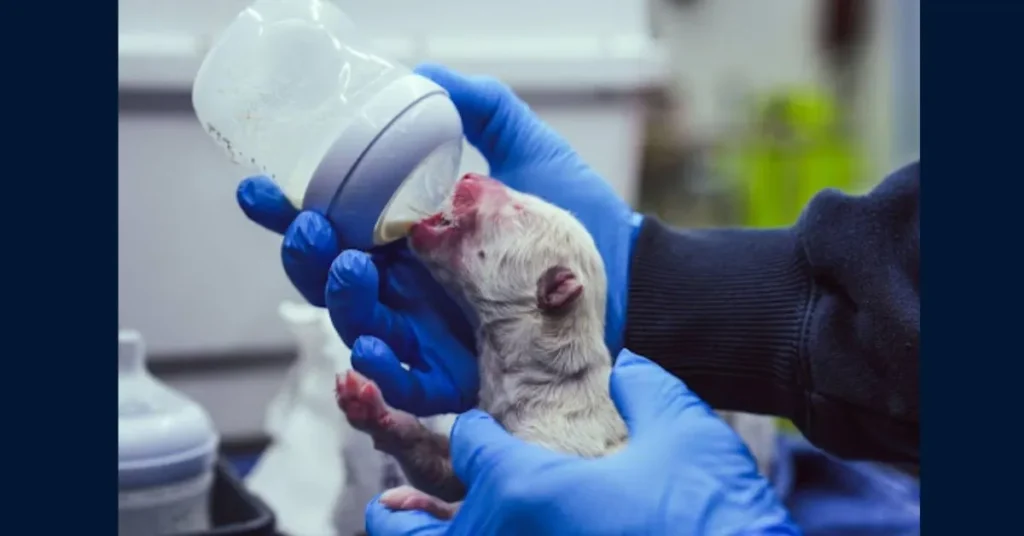When Colossal Biosciences announced the successful resurrection of dire wolves after 12,000 years of extinction, questions immediately arose about how these ancient predators would be cared for in the modern world. The company has implemented an extensive, specialized care program that balances scientific research, animal welfare, and long-term conservation goals.
Contents
The Dire Wolf Sanctuary
The three dire wolf pups—males Romulus and Remus (born October 2024) and female Khaleesi (born January 2025)—currently reside on a sprawling 2,000+ acre secure ecological preserve. This carefully designed facility provides a naturalistic environment where the wolves can develop and express their natural behaviors while remaining under close supervision.
The sanctuary is certified by the American Humane Society and registered with the USDA, adhering to the highest standards of animal care. Colossal emphasizes transparency in its approach, including an interactive “dire wolf development tracker” that allows monitoring of the wolves’ health and developmental milestones.
“Colossal has achieved American Humane Society Certification, the prestigious designation ensuring excellence in animal welfare and care,” stated Robin Ganzert, Ph.D., CEO of American Humane Society. “Optimal welfare is evidenced by spacious habitats with ample space and opportunity for animals to socialize, exercise, and exhibit natural behaviors.”
Specialized Care Team
Colossal employs ten full-time animal care professionals dedicated specifically to the wolves’ physical and mental well-being. This specialized team monitors the animals around the clock, ensuring their health needs are met while allowing them to develop as naturally as possible.
The facility includes an on-site veterinary clinic for immediate medical attention if needed. This dedicated care team has observed that the wolves are in excellent health and are meeting all developmental milestones as they mature from newborns to adolescents.
Security and Monitoring
The entire preserve is enclosed by 10-foot-tall, zoo-grade fencing with redundant perimeter security systems. Within this secure environment, the wolves are continuously monitored through on-site live cameras, security personnel, and drone tracking to ensure their safety and welfare.
For closer observation and care, the preserve includes a smaller, six-acre secure site where the dire wolves can be further tended to and studied. This area supports the on-site veterinary clinic, a wolf management facility, an outdoor storm shelter, and natural built dens for the wolves.
Wild by Nature
Despite being born through advanced biotechnology, these dire wolves are displaying remarkably wild behaviors. Unlike domestic puppies, Romulus and Remus keep their distance from humans, flinching or retreating even from familiar caretakers, demonstrating true lupine instincts.
“They’re not dogs, or even modern-day wolves. They’re dire wolf pups, back from extinction after some 12,000 years,” notes Colossal’s documentation of the animals. At just six months old, the male pups already weigh approximately 80 pounds and exhibit classic dire wolf traits—thick white fur, broad heads, and hefty builds.
The Ethical Framework
Colossal’s approach to raising de-extinct animals includes careful consideration of ethical implications. The company’s transparent approach to care is meant to reassure the public that the revived wolves are being ethically and safely integrated into the modern world.
Alta Charo, J.D., Professor of Law and Bioethics and Colossal Bioethics Lead, has helped shape the company’s responsible approach: “As humans we have a unique capacity and moral obligation to steward the earth for the benefit of ourselves and all living things, for now and for the future.”
Future Plans: From Sanctuary to Rewilding
The conservation property will provide lifetime care, feeding, and protection for the current wolves. However, Colossal has outlined longer-term visions that extend beyond the current facility. The wolves will be monitored and observed to assess their readiness to move into larger protected and managed care facilities.
“Long term, Colossal plans to restore the species in secure and expansive ecological preserves potentially on indigenous land,” the company has stated. This vision aligns with perspectives from indigenous communities, who see deeper meaning in the return of this ancient predator.
“The de-extinction of the dire wolf is more than a biological revival. Its birth symbolizes a reawakening—a return of an ancient spirit to the world,” shared MHA Nation Tribal Chairman Mark Fox. “The dire wolf carries the echoes of our ancestors, their wisdom, and their connection to the wild.”
Research Continues
While the wolves receive dedicated care, they also contribute to ongoing research that could benefit conservation more broadly. The successful care protocols developed for these de-extinct animals have already informed Colossal’s work with endangered species, most notably the critically endangered red wolf.
Alongside the dire wolf births, Colossal announced it had successfully cloned two litters of red wolves, producing four healthy pups. The company has stated that it hopes to contribute these wolves to existing red wolf conservation programs, potentially increasing the genetic diversity of the captive red wolf population by 25%.
Matt James, Colossal’s Chief Animal Officer and Colossal Foundation Executive Director, emphasized this connection: “The technologies developed on the path to the dire wolf are already opening up new opportunities to rescue critically endangered canids.”
A Model for Future De-Extinctions
The care protocols and facilities established for the dire wolves are likely to serve as a template for Colossal’s future de-extinction projects. The company is already working on bringing back the woolly mammoth by 2028, followed by the thylacine (Tasmanian tiger) and dodo.
As these white-furred dire wolf pups continue to grow under careful supervision, they represent not just a scientific miracle but a test case for how humanity might responsibly reintroduce species lost to extinction. Their care facility, with its blend of natural environment and modern monitoring, may establish a new model for how we approach the reintegration of de-extinct species into a world that has changed dramatically since they last roamed the Earth.

